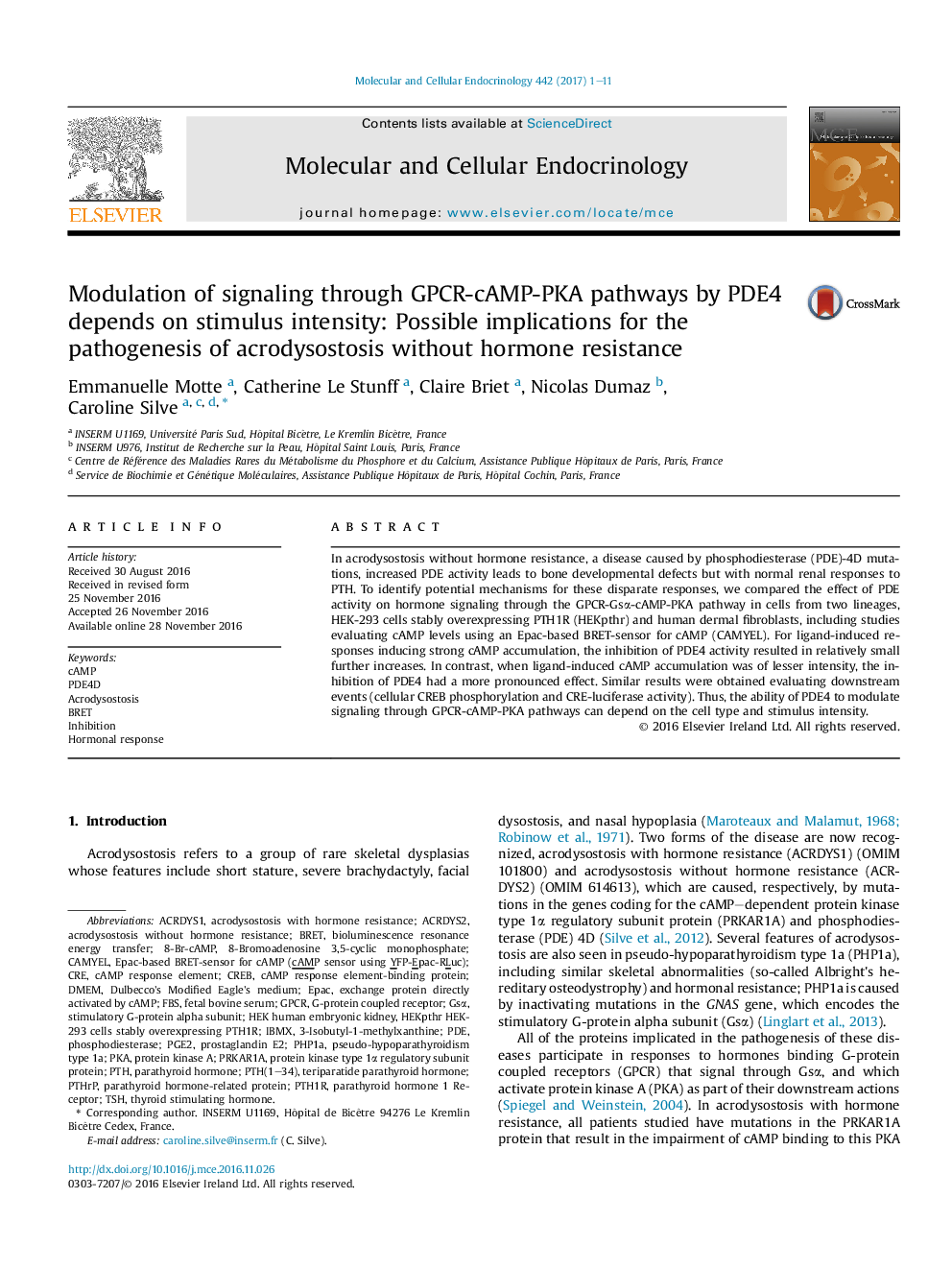| Article ID | Journal | Published Year | Pages | File Type |
|---|---|---|---|---|
| 5534075 | Molecular and Cellular Endocrinology | 2017 | 11 Pages |
â¢The strength of the signal initiating ligand-induced cAMP accumulation is inversely correlated to the extent that inhibition of PDE4 further increased cAMP accumulation and signaling.â¢The intensity of ligand-induced signaling through a given GPCR is cell type dependent.â¢The intensity of the initial stimulus is a major determinant of the ability of PDE4 to attenuate the subsequent response.â¢Thus, PDE4D mutations resulting in inappropriately increased activity may impair some, but not all, responses transmitted through GPCR-Gsα-PKA pathways in a cell type dependent manner.
In acrodysostosis without hormone resistance, a disease caused by phosphodiesterase (PDE)-4D mutations, increased PDE activity leads to bone developmental defects but with normal renal responses to PTH. To identify potential mechanisms for these disparate responses, we compared the effect of PDE activity on hormone signaling through the GPCR-Gsα-cAMP-PKA pathway in cells from two lineages, HEK-293 cells stably overexpressing PTH1R (HEKpthr) and human dermal fibroblasts, including studies evaluating cAMP levels using an Epac-based BRET-sensor for cAMP (CAMYEL). For ligand-induced responses inducing strong cAMP accumulation, the inhibition of PDE4 activity resulted in relatively small further increases. In contrast, when ligand-induced cAMP accumulation was of lesser intensity, the inhibition of PDE4 had a more pronounced effect. Similar results were obtained evaluating downstream events (cellular CREB phosphorylation and CRE-luciferase activity). Thus, the ability of PDE4 to modulate signaling through GPCR-cAMP-PKA pathways can depend on the cell type and stimulus intensity.
